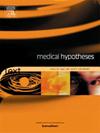疼痛研究中主观评分的解释:情境效应如何?继发性痛觉过敏一例
IF 0.8
4区 医学
Q3 MEDICINE, RESEARCH & EXPERIMENTAL
引用次数: 0
摘要
在许多实验和临床研究中,实验诱发的疼痛体验的主观评分被用来评估伤害功能。然而,我们对这些主观评分是如何产生和影响的理解是有限的。不考虑主观反应如何产生的可变性,例如由于(实验性)疼痛的经验,可能会导致有偏见,动力不足甚至误解研究或临床决策。在这里,我们在研究使用高频刺激(HFS)作为条件刺激的继发性痛觉过敏的情况下说明了这种变异性。最近,关于HFS对单次电刺激的影响有不同的研究结果。虽然大多数研究报告HFS后测试电极的疼痛等级相对于控制部位有所增加,但在一些研究中,测试和控制等级之间的差异是控制部位疼痛等级降低的结果。在这些报告中,观察结果被解释为伤害机制,如习惯化或下降抑制。在我们看来,这些机制并不能(完全)解释可观察到的事件,也不能解释研究之间的差异。在此,我们对可观察到的事件进行了现象学分析,并基于此分析假设评分可能受到先前实验刺激经验(即熟悉HFS)的影响。接受这一假设表明,在HFS实验中(共存)存在其他机制,因为先前提出的潜在机制无法解释这些观察结果。我们认为,可观察到的事件和研究之间的差异都可以用所谓的情境效应的机制来解释,即在其他感官模式中众所周知的现象,即参与者的反应会根据先前提供的刺激而改变。重要的是,从理论的角度来看,情境效应可以在疼痛研究的许多实验过程中发挥作用,而不仅仅是在使用HFS时,但迄今为止似乎还没有得到重视。因此,在疼痛研究中的一些实验过程中,由于对伤害机制的解释性关注,观察到的变化可能被错误地归因于伤害功能的变化。在短期内,接受这一假设强调了迫切需要进行研究,在疼痛研究中通常执行的程序中评估情境效应的效果和大小。从长远来看,根据这些研究的结果,这不仅可能导致重新审视实验(熟悉)程序,还可能导致修改这些实验程序的早期结果的解释方式。本文章由计算机程序翻译,如有差异,请以英文原文为准。
Interpretation of subjective ratings within pain research: What about context effects? an induced secondary hyperalgesia example
In many experimental and clinical studies, subjective ratings of experimentally induced pain experiences are used to evaluate the nociceptive function. However, our understanding of how these subjective ratings are produced and influenced is limited. Not taking into account variability in how the subjective responses are produced, e.g. due to experience with (experimental) pain, might lead to biased, underpowered or even misinterpreted studies or clinical decisions. Here, we illustrate such variability in the case of studying secondary hyperalgesia using High Frequency Stimulation (HFS) as a conditioning stimulus. Recently, different findings have been reported related to the effect of HFS on single electrical stimuli. While most studies report an increased pain rating at the test electrode after HFS relative to the control site, in some studies this difference between test and control ratings is the result of a decrease in pain ratings at the control site. In these reports, the observations are explained by nociceptive mechanisms like habituation or descending inhibition. In our view these mechanisms do not (fully) explain the observable event, nor the differences between the studies. Here, we provide a phenomenological analysis of the observable event and based on this analysis hypothesize that ratings can be affected by prior experience with experimental stimuli (i.e. familiarization with HFS). Acceptance of the hypothesis suggests the (co–)existence of alternative mechanisms at experiments with HFS, as earlier suggested underlying mechanisms are unable to explain these observations. We argue that both the observable event and the differences between the studies can be explained by mechanisms underlying so-called context effects, i.e. well-known phenomena in other sensory modalities whereby the participant’s response is altered based on earlier provided stimuli. Importantly, from a theoretical perspective context effects could (have) play(ed) a role in (many) more experimental procedures within pain research than only when HFS is used, but seemingly to date have not received attention. Consequently, with some experimental procedures within pain research, observed variation might be wrongly attributed to changes in nociceptive function due to an explanatory focus on nociceptive mechanisms. On the short-term, acceptance of the hypothesis highlights an urgent need to perform research in which the effect and magnitude of context effects are evaluated in commonly performed procedures within pain research. On the long-term, dependent on the findings of these studies, this might lead to revisiting not only experimental (familiarization) procedures, but also revising the way earlier results from these experimental procedures have been interpreted.
求助全文
通过发布文献求助,成功后即可免费获取论文全文。
去求助
来源期刊

Medical hypotheses
医学-医学:研究与实验
CiteScore
10.60
自引率
2.10%
发文量
167
审稿时长
60 days
期刊介绍:
Medical Hypotheses is a forum for ideas in medicine and related biomedical sciences. It will publish interesting and important theoretical papers that foster the diversity and debate upon which the scientific process thrives. The Aims and Scope of Medical Hypotheses are no different now from what was proposed by the founder of the journal, the late Dr David Horrobin. In his introduction to the first issue of the Journal, he asks ''what sorts of papers will be published in Medical Hypotheses? and goes on to answer ''Medical Hypotheses will publish papers which describe theories, ideas which have a great deal of observational support and some hypotheses where experimental support is yet fragmentary''. (Horrobin DF, 1975 Ideas in Biomedical Science: Reasons for the foundation of Medical Hypotheses. Medical Hypotheses Volume 1, Issue 1, January-February 1975, Pages 1-2.). Medical Hypotheses was therefore launched, and still exists today, to give novel, radical new ideas and speculations in medicine open-minded consideration, opening the field to radical hypotheses which would be rejected by most conventional journals. Papers in Medical Hypotheses take a standard scientific form in terms of style, structure and referencing. The journal therefore constitutes a bridge between cutting-edge theory and the mainstream of medical and scientific communication, which ideas must eventually enter if they are to be critiqued and tested against observations.
 求助内容:
求助内容: 应助结果提醒方式:
应助结果提醒方式:


